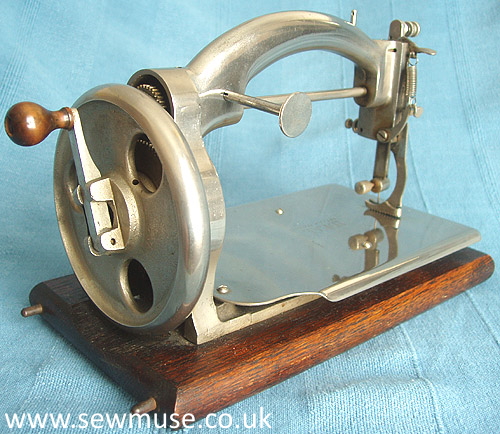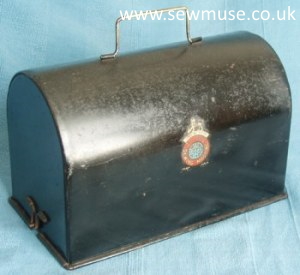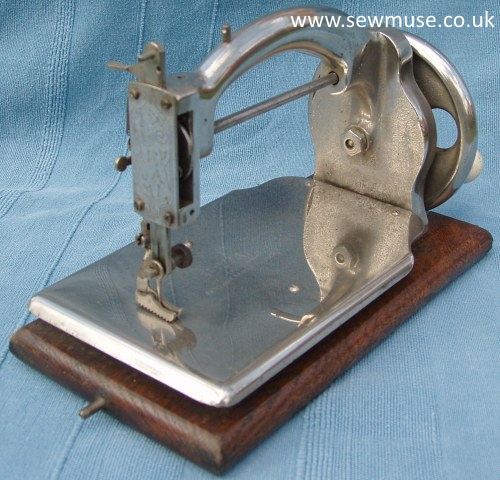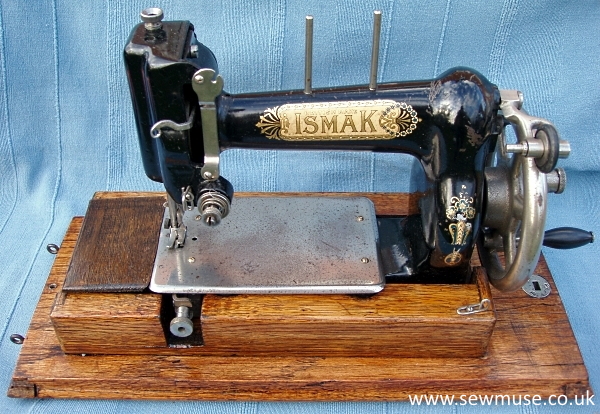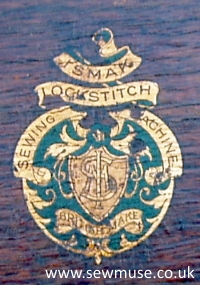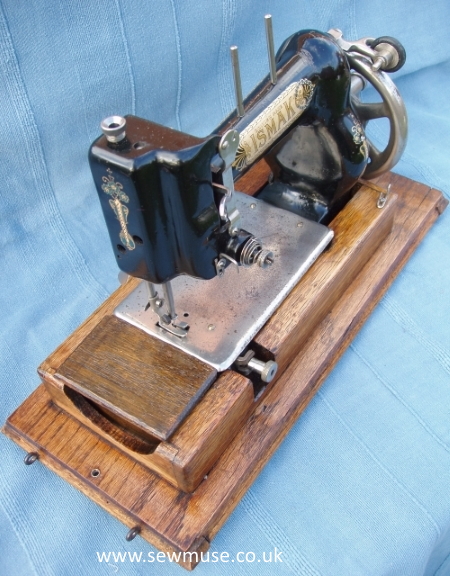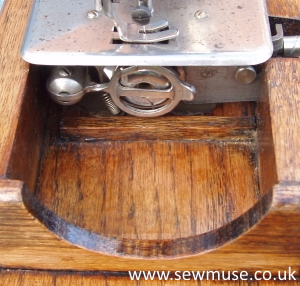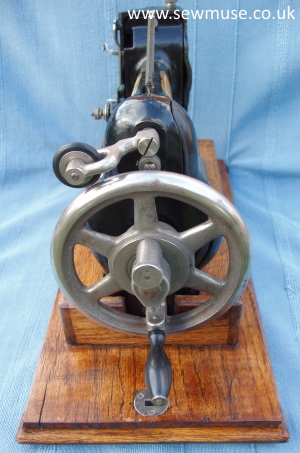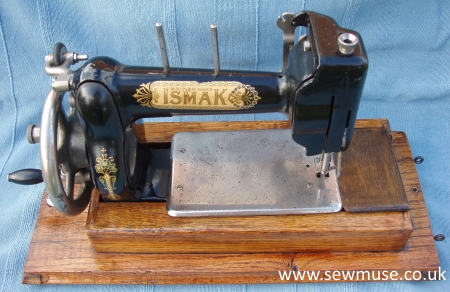The Ideal Sewing Machine Co. Ltd was established c1919 to produce machines made under Leslie Salter's patent of 1910.
The factory at the Sandycombe Works, Kew Gardens, London was purchased in 1922 and the company had offices at 66 Broad Street Avenue, London. Production of the machine commenced in 1921 with limited numbers of machines being availale by May of that year. The company appointed agents throughout Great Britain and these tended to be large Department Stores where demonstrations of the machine would be given.
The machine was nickel plated and weighed just 7.5 lbs. It produced a chain-stitch and featured a walking foot cloth feed. In March 1922 the Chairman of the company reported that around 8,000 machines per month were being produced with sales being made throughout the world & that companies had been formed in America & Canada to manufacture & sell the machine.
The original version of the Ideal has the letter "A" under its base. An improved version of the machine was available by June 1922 & this has "B" under the base. It is not known how many of each version were made but it seems likely that the company produced a total of around 100,000 Ideal machines before production was discontinued.
In late 1922 the company was selling off large quantities of the Ideal, Lewis's Department Stores alone was advertising 4,000 machines available across its stores at a discounted price of 15/6 & in March 1923 Gamages discounted it to just 8/11.
In September 1922 a competition was run to find a suitable name for a new Rotary Lockstitch machine which the company had designed. The prize was £100 cash & there were 25 of the new machines to be given away as consolation prizes. The winning name announced in October 1922 was ISMAK however the first adverts selling the machine at 2 guineas (42/-) didn't appear until May 1923 by July 1924 it was being discounted and The Ideal Sewing Machine Co. went into liquidation in early 1925.
In 1926 a new company Simplex Ltd was formed to enter into an agreement with the liquidator of the Ideal Sewing Machine Company Ltd. This apparently turned out to be part of a share hawking scheme.
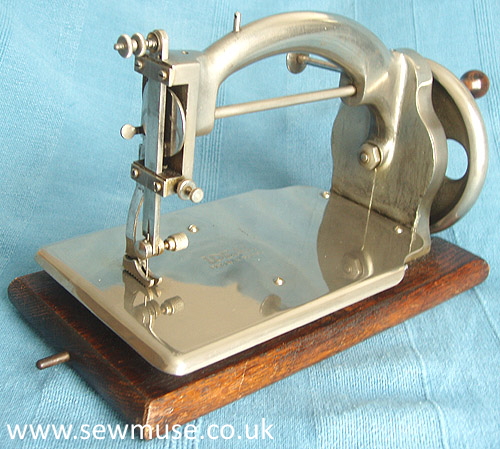
Ideal "A" Serial No. None
The original version of the Ideal has an exposed needle bar, the push fit spool pin is located horizontally on the rear of the arm. Note how rough some of the castings are inparticular, the gear cover and balance wheel.
Completely Nickel-plated the machine has a painted sheet steel domed cover with the Company's Trade Mark on the front. The case is held in place by three prongs which protrude from the wooden base and which align with holes and a hasp on the case.
Follow this link to a FREE copy of the Ideal "A" Manual kindly supplied by Paul Verney
Ideal "B" Serial No. None
At a glance the "A" and "B" machines appear identical however the "B" version featured a face plate with Ideal stamped diagonally across it and the spool pin was fixed in place at the rear of the machine.
Both versions have Ideal Pat UK 30264 stamped on the bed but the "B" version has British Manufacture. There were some minor differences to the mechanism between the "A" and "B" versions.
Ismak Serial No. None
The Ismak rotary Lock-Stitch sewing machine was introduced in 1923 and was based on Wheeler and Wilson's rotary hook infact the bobbin and bobbin case are identical to those of the Wheeler & Wilson No. 9.
The machine appears to have been something of a flop with machines being sold off cheaply in early 1924 and its failure possibly contributed to the demise of the Ideal Sewing Machine Co.
This example is in excellent condition having been restored
by Paul Verney. It is stamped ISMAK Lockstitch on the clothplate along with the patent number 30844/22.
The wooden block lifts out of the recess to reveal the bobbin case.
The bobbin winder is mounted at the top of the pillar and when required it is simply pressed onto the balance wheel which can be disconnected for bobbin winding. The casting of these parts is quite rough.
The handle folds flat for transport and the machine has a simple oblong carrying box.

